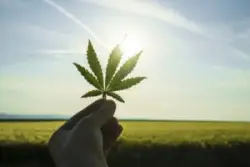
Dabbing is a form of
marijuana use that involves the inhalation of vapor from butane hash oil or “BHO”
– a more concentrated form of cannabis. The BHO (street names: dab,
budder, honeycomb, and earwax) has more concentrated THC, marijuana’s
active ingredient, and is therefore more potent. Dabbing, as it has come
to be called, is especially popular among young people.
The BHO can be smoked through modified bongs or rolled up and “vaped”
using e-cigarettes. In reference to the dabbing phenomenon that has occurred
over the past three years, one criminology expert said the practice is
“exploding onto the drug-use scene.”
Although dabbing has been around for more than 40 years, it didn’t
become very popular until recently. Why the recent shift from obscurity
to popularity? Some experts believe this is due at least in part to pot
legalization and commercial cannabis cultivation.
Whether out of novelty or the need for a better high, marijuana users of
all types have been drawn to dabbing. However, with a potency almost four
times that of a regular joint, dabbing may be putting people at risk.
Manufacturing the dabs at home is also dangerous. Some say just about
as dangerous as manufacturing meth, resulting in fires, explosions, and
burn injuries.
Since dabbing has only recently risen in popularity, there are not many
studies on the health effects of inhaling such high concentrations of
THC, but users should be cautious. According to a survey of regular marijuana
users, many of those surveyed said they believed that dabbing was more
dangerous than regular marijuana use because the strength of the drug
could result in a higher tolerance, stronger withdrawal symptoms, and
therefore a much higher chance of becoming addicted.
Call or text 614-884-1100 or complete a Free Case Evaluation form

